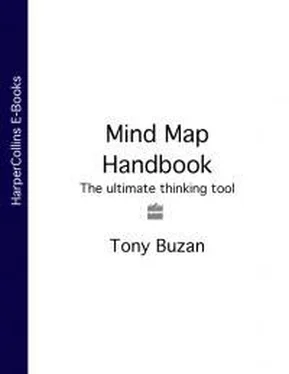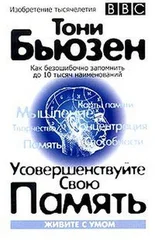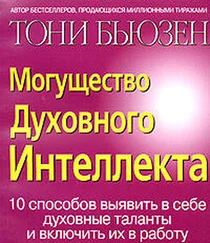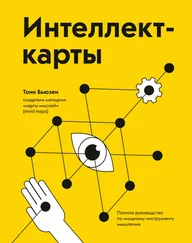Do you have newspapers, magazines or books in your home that you have promised yourself you would read, but for which you have not yet managed to find the time?
Over 95 per cent of people answer ‘YES’ to this question, thinking that it means that they are merely very good at procrastinating! They are – but they are also very creative! Think about it. Every day, for weeks, months or years, their brains have been creating the most fantastic excuses for not getting down to reading. It is irrelevant that their creativity is directed towards not doing something – it is still exceptional creativity, and is such a limitless power-source that it can sometimes go on for a lifetime! Which brings us to the question:
Are you alive?
This may seem somewhat obvious, but the question conceals a deep and meaningful truth. Every day of your life, if you are to survive that day, your amazing brain has to create tens of thousands of thoughts, actions and solutions to problems that, if it did not, would end your time on this earth. The mere fact that you are alive proves that you are abundantly creative.
Increasing and releasing the gigantic Creative Intelligence you possess is simply a matter of understanding how it works and how to develop it.
What is Creative Intelligence?
Your Creative Intelligence is your ability to come up with new ideas, to solve problems in original ways, and to stand head and shoulders above the crowd in terms of your imagination, your behaviour, and in your productivity.
Your Creative Intelligence includes a number of factors, all of which can be taught and developed so that you can increase your creativity. The Power of Creative Intelligence will introduce you to each one of these factors in turn, and will show you how to develop and enhance them. These factors include:
The Left/Right Brain.The ability to use, in conjunction with each other, the different skills of the left and right sides of your brain.
Note-making/Mind Mapping.The ability to ‘make your thoughts visible’ by getting them out of your head and on to paper, so that you can explore them more fully.
Fluency.The speed with which you can rattle off new ideas. Fluency is the measure of your creative productivity.
Flexibility.Your ability to produce different kinds of ideas, and to shift from one approach to another using a rich variety of strategies, constitutes your creative flexibility. Flexibility includes your ability to see things from different angles, to consider things from other points of view, to take old concepts and rearrange them in new ways, and to reverse pre-existing ideas. It also includes your ability to use all your senses when creating new ideas.
Originality.Originality is one of the essences of Creative Intelligence and creative thinking. It represents your ability to produce ideas that are yours alone – that are unusual, unique and ‘eccentric’ (i.e., ‘away from the centre’).
Expanding on Ideas.The good creative thinker takes a central idea and builds on it in all directions, developing, expanding, embroidering and generally elaborating the original thought.
Association.The creative thinker makes use of the fact that the human brain is a giant ‘Association Machine’. Having some intuitive knowledge of how this Association Machine works (and you will have some very explicit knowledge, having read this book!), creative thinkers are able to tap into this infinite resource to improve all aspects of their Creativity.
An Overview of the Power of Creative Intelligence
The Power of Creative Intelligence is designed to take you on a Grand Tour of Creativity, showing you how you can expand and increase the power of your Creative Thinking at each stage of your journey. The following chapters contain potted case histories and stories of individuals who have exemplified the qualities being discussed. There is also a Creativity Workout in each chapter, where you can try your hand at specific exercises designed to make you smarter. Each exercise, while developing the specific Creative Intelligence skill area for which it is designed, will (thanks to the way the brain is an infinitely expanding and inter-connecting association machine!) simultaneously develop the mental muscles of your other Creative Intelligence skill areas.
The chapters also explain how you can use Mind Maps to develop your Creative Intelligence, and give examples of those ultimate creativity-enhancing thinking tools, which I have spent my life developing. There are also many other diagrams and illustrations that use the principles of Creativity to help you improve yours. Throughout, you will have another special guide: Leonardo da Vinci – voted the greatest Creative Genius of the last millennium!
3.2
Using Your Magical Left and Right Brains
In this Chapter you will be given state-of-the-art information about your left and right brains, and how you can combine the two sides to multiply, phenomenally, your Creative Power.
We are going to go on a supersonic flight over the past 50 years of research on the brain. The journey starts in the laboratory of Professor Roger Sperry in California, and describes the research that won him a Nobel Prize in 1981, and which will make you delightfully aware of hidden creative capacities waiting to be unleashed by you.
In the 1950s and 1960s, Professor Sperry was investigating brainwave function. To explore different thinking activities and their effect on the brainwaves, Sperry and his colleagues asked the volunteers to perform different mental tasks, ranging from adding and subtracting numbers in their heads, through to reading poetry, reciting memorized lines, doodling, looking at different colours, drawing cubes, analysing logical problems and daydreaming.
Sperry had predicted that the brainwaves would be somewhat different for different activities, and he was correct. What he had not predicted – and this finding changed forever the way we think about the potential of the human brain and its ability to think creatively – was the following startling revelation: on average, the brain divided its activities very distinctly into ‘left brain’ (left cortex) activities and ‘right brain’ (right cortex) activities. This is the research that has become popularly known as the ‘left/right brain’ research. The dominant division of labour was as follows:
Left brain
Right brain
Words
Rhythm
Logic
Spatial Awareness
Numbers
Dimension
Sequence
Imagination
Linearity
Daydreaming
Analysis
Colour
Lists
Holistic Awareness
Sperry also discovered that when the right cortex was active, the left tended to go into a relatively restful or meditative state. Similarly when the left cortex was active, the right became more relaxed and calm.
Furthermore, and this came as a real surprise (as well as a beacon of hope), every brain involved in this brainwave experiment was shown to have all the cortical skills in fine working order. In other words, at the basic physical, physiological and potential level, everybody had a massive range of intellectual, thinking and creative skills that they were obviously using only in part.
By the 1970s, these results had led to an explosin of further researches, studies and surveys around the nature of this untapped potential.
One obvious line of investigation (with which I was personally involved) was to survey people on what they thought about their own abilities, and then to check these perceived abilities/disabilities with their real brainwave-measured capacities.
Читать дальше












